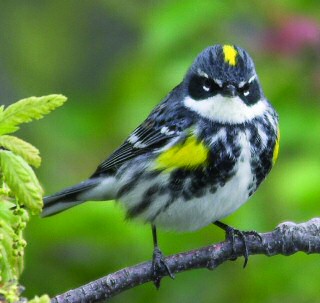Emerson Road, Westwood, NJ
Phone: (201) 336-7275
www.co.bergen.nj.us/Parks
Bergen County Parks Department
Exit via Main Street. At 1st traffic light turn Left onto Old Hook Road. After one black, turn Right onto Emerson Road. After 1/2 mile turn left into Pascack Brook County Park. Map
Open daily from dawn to dusk. A canoe or kayak can be hand-carried and launched into the brook, which is stocked with rainbow, brook and brown trout by the NJ DEP/Division of Fish and Wildlife. Bluegill sunfish, yellow perch, largemouth bass, smallmouth bass, brown bullhead and carp have been caught in the brook and the pond.
Rockland Coaches Bus Lines No. 14K from 178th street, NYC and No. 84 from 178th Street, NYC stop at Rivervale Road just north of Brookside Avenue. Walk south on Rivervale Road (away from Westwood Avenue), turn Right onto Brookside Avenue (this becomes Emerson Road). Park is on your Right. Walking distance is less than 1 mile.
An excellent mix of riparian forest vegetation can be found along the nature trail and along the edges of the mowed areas. Try your hand at spotting an eastern garter snake, box turtle, snapping turtle, painted turtle, red-eared slider, and possibly wood turtle.
 |
| Yellow-rumped Warlber | Lloyd Spitalink |
| |
| | Upon arrival, the first things you will notice are the playground, ball fields, pond and other active recreation features. But don't let that fool you. When you venture into the natural area you will be amazed at the wealth of birds, plants and animals. Natural streamside habitats are hard to find in Bergen County. At Pascack Brook County Park, you can experience this remarkable and productive ecosystem firsthand.
The moving water of Pascack Brook remains unfrozen through most, if not all, of winter. Mixed flocks of winter finches and other wintering birds, such as White-throated Sparrow and Dark-eyed Junco can be seen foraging at the edges of the mowed areas. Large flocks of gulls and geese also inhabit the park - look for the occasional Snow Goose. Scan old snags and trees for the Red-bellied and Downy Woodpeckers.
This suburban habitat oasis attracts American Redstart, Black-throated Blue, Black-throated Green, Yellow-rumped, Black-and-white and Palm Warblers, along with Red-eyed Vireo, Wood Thrush and Solitary Sandpiper. Early morning warbler walks can be very rewarding when conditions are right. Mature trees along the edges of the park flower, attracting insects. They in turn attract migrant species.
As in most, if not all, suburban areas, this is the slowest season for bird and wildlife watching. Be on the lookout for resident mimic thrushes, such as Northern Mockingbird and Gray Catbird, as well as Canada Goose, Mallard, Eastern Screech-Owl, Red-bellied Woodpecker, Great Blue Heron, Green Heron and Great Egret.
Migrating waterfowl such as Hooded Merganser and Wood Duck can sometimes be observed in the brook. Look for Swainson's Thrush, Red-winged Blackbird, Yellow-shafted Flicker, Yellow-rumped Warbler and Tree Swallow.
|